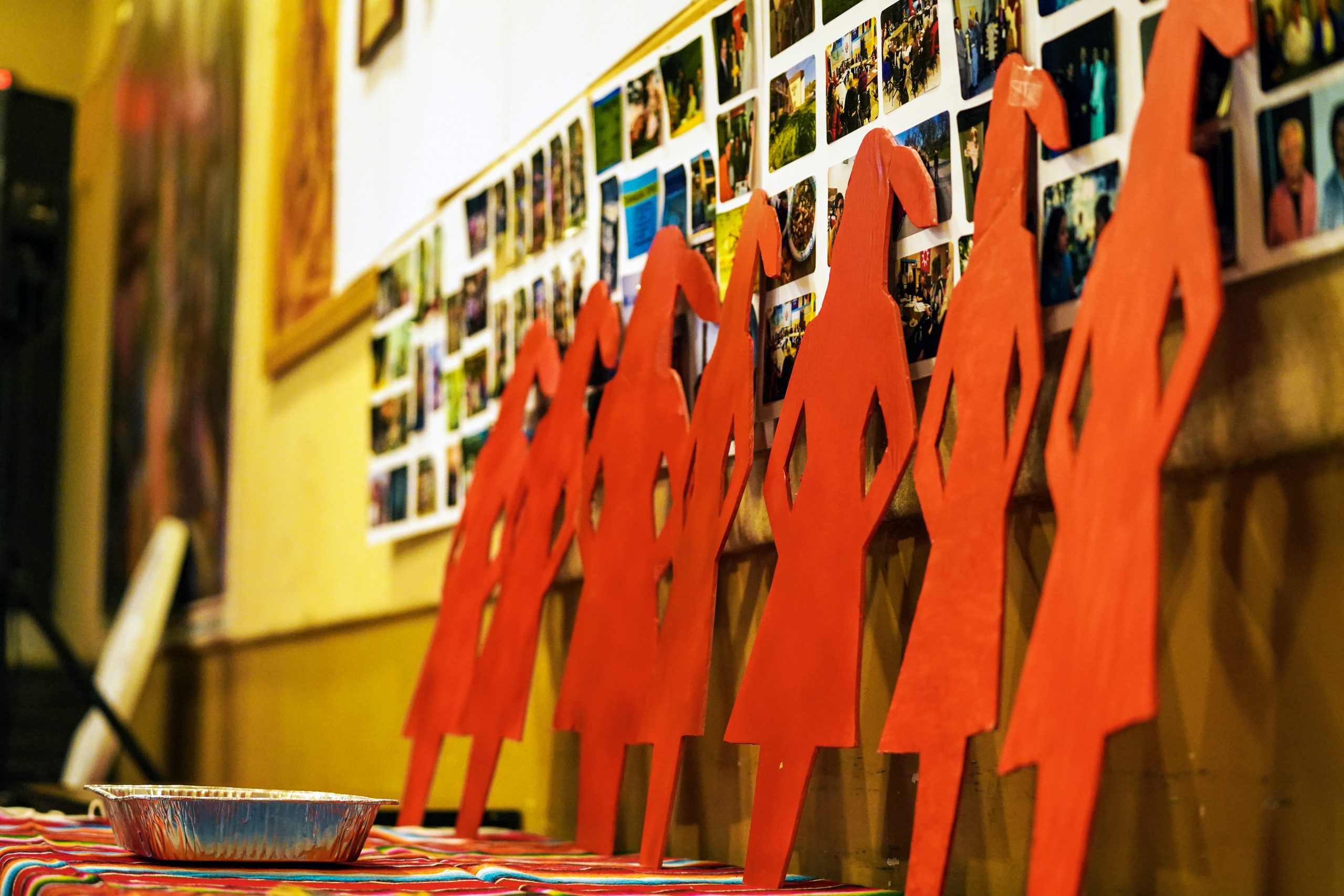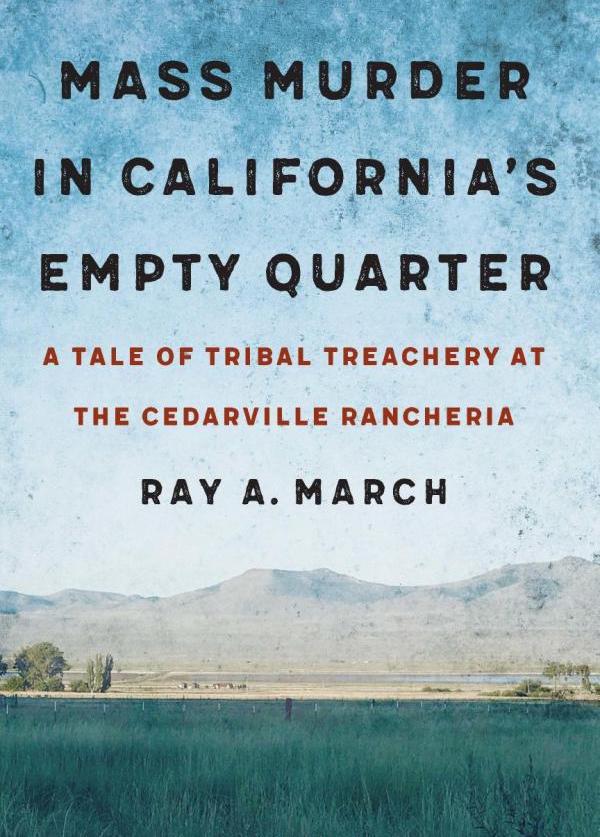Indianz.Com > News > Gabe Galanda: The forgotten plight of the disenrolled in Indian Country

Disenrollment and the Missing and Murdered
Tuesday, October 6, 2020
As our women, men, and children go missing and get murdered, we say their names. We cry for outside help. We yearn for their return. We mourn their passing.
But there are other relatives who go missing or suffer violence and we do not mention them. We sit quiet. We ignore their plight. We forget them.
Those forgotten relatives who have gone missing are the Disenrolled.
We also ignore the violence and murder that accompanies tribal disenrollment.
A new book, Mass Murder In California’s Empty Quarter, chronicles the intersection of murder and disenrollment. Author Ray March tells the story of how, in 2014, a former Cedarville Rancheria Chairwoman executed her brother, nephew, niece, and the tribe’s administrator before they could evict her, deprive her of $80,000 in annual gaming per capita monies, and disenroll her.
At the time of that mass murder in Alturas, California, as the book explains, the disenrollment epidemic was rampant on the West Coast. And as a consequence, disenrollment-related violence was also on the rise nationwide, particularly in California.
In 1996, intra-tribal violence erupted within the Keweenaw Bay Indian Community when a minority tribal faction seized a tribal building and repeatedly clashed with “tribal police” for eighteen months in response to a tribal council’s “knocking 200 political foes off the voting rolls.”
In 2000, Las Vegas Paiute Tribal police chief and her husband were arrested for an alleged assault on a tribal-council member in a dispute resulting from disenrollment proceedings.
In 2012, the disenrollment dispute on the Picayune Rancheria resulted in a standoff between two factions that ended in a riot, resulting in injuries including stabbings.
In 2013, there was an eleven-hour standoff between the Butte County Sheriff’s Department and peaceful protesters at the Berry Creek Rancheria headquarters. The protest was an attempt to stop the permanent disenrollment of more than 70 Tyme Maidu members. Protesters surrendered and were arrested after the Sheriff’s deputies resorted to flash-bang grenades.
Within a week of the Cedarville tragedy, a thirteen-year Bureau of Indian Affairs (BIA) Pacific Region employee sounded the alarm to the Director of the BIA’s Office of Justice Services (OJS) in Washington, D.C., warning that disenrollment-related “attacks at tribal offices may now begin to increase similar to the increase in school shootings in the aftermath of Columbine.” OJS was warned: “In the Pacific Region and elsewhere there have been many tribal disenrollments as competing groups and families exert their power. Groups of . . . Indians are reportedly now having heated discussions through social media.” The BIA employee was correct. By 2014, disenrollment in communities like the Nooksack, Grand Ronde, and Saginaw Chippewa Reservations and Pala and Paskenta Rancherias had gotten heated. Fueled by charged Facebook rhetoric, in particular, each community was a powder keg waiting to explode. That year at Paskenta, a Tribal Council faction disenrolled 80 people, seized the tribe’s casino, and deputized a non-Indian militia—equipping them with AR-15s to secure the gaming palace and its coffers. Having seen the semiautomatic rifle-toting goons at Paskenta with my own eyes, I remain surprised and relieved that nobody was maimed or killed. Two years later things turned violent at Nooksack, where tribal cops commenced their practice of brutalizing and harassing Indigenous women and elders who oppose the disenrollment of the Nooksack 306. I have also personally witnessed nearly a decade of tribally sanctioned intimidation and violence at Nooksack and credit the 306 for not physically fighting back. Indian Country is lucky that there has not been another mass casualty event like Cedarville. When an Indigenous person’s “everything” is being forcibly taken away; when a disenrollee is faced with losing their home, land, job, healthcare, relations, and identity, it is fathomable that they will fight back in order to survive and protect their family. When there is no legal or political recourse whatsoever because —“it’s an internal matter”—to paraphrase U.S. Supreme Court Justice Thurgood Marshall in Santa Clara Pueblo v. Martinez—it is fathomable that disenrollees might take matters into their own hands. When an Indigenous person’s cultural and socioeconomic safety net is cut out from under them, it is fathomable that they might feel the need to get before getting got.Ex-leader of Cedarville Rancheria faces death sentence for murders #California https://t.co/H7UKXCHTZ1 pic.twitter.com/TNXiZhFvdY
— indianz.com (@indianz) January 11, 2017
Violence and murder are never acceptable, but such outcomes are predictable. Having represented over 1,000 disenrollees from throughout the country and witnessed their persecution over the last decade, I constantly fear the worst. Not even COVID-19 has stopped disenrollment or assuaged my fear. Tribes like the Habemotel Pomo of Upper Lake cruelly purged tribal members notwithstanding the pandemic. The stresses and trauma of COVID-19 added to disenrollment are accelerants of an already deadly arson fire. Ray March reports that after Cedarville, the BIA developed an “action report” to guard against any copycat, disenrollment-related murder or attack. That weak response not nearly enough, especially because it is the United States that has catalyzed disenrollment and related violence. According to research I’ve done while sheltering in place, for the last 230 consecutive years the federal government created devices that have divided and diminished Indigenous peoples. These include Indian “payrolls” by 1790, blood quantum by 1817, censuses and “per capita” payments by the mid-1800s, enrollment by the late 1800s, disenrollment by the early 1900s, constitutional governance by 1934, and unregulated gaming distributions by 1988. By the 21st Century, these devices have been turned into weapons within 15% of tribal nations and wielded by tribal members to terminate their own kin. There are 10,000 disenrollment casualties, and counting. There are also literal casualties, as at Cedarville."No Rest in Redding" by @natasha_marie_bhttps://t.co/OrviN7uURI #StopDisenrollment pic.twitter.com/pLamVxfE5O
— Gabe Galanda, Indigenous Rights Lawyer (@NDNlawyer) September 28, 2020
Despite these truths, both the Obama and Trump administrations have ignored cries for federal police protection against disenrollment-related violence. A BIA-OTJ bureaucratic plan doesn’t come close to cutting it. Likewise, Congress and national tribal organizations turn a deaf ear to Indigenous cries for help and protection. Despite all of the rhetoric on Capitol Hill about enhancing tribal law and order, deterring violence against our women, and bringing our missing and murdered relatives home, nobody expresses a word of concern about the Indigenous dehumanization associated with disenrollment. Despite today’s historic human rights reckoning, nobody in federal-tribal political circles expresses a genuine word about Indigenous human rights protection. For as long as silence is our status quo, it is only a question of time before the next violent episode—dare I say the next mass murder—befalls us. Only then might we ask ourselves if Indigenous lives really matter."Next stop for our bills to keep Indigenous people from disappearing is the President’s desk": Legislation to address the crisis of missing and murdered loved ones, especially women and girls, is almost law. @RepDebHaaland #SavannasAct #NotInvisible #MMIW https://t.co/8XBrvnFfME
— indianz.com (@indianz) September 30, 2020
Gabriel S. Galanda is the Managing Lawyer at Galanda Broadman, PLLC, an Indigenous rights law firm. He belongs to the Round Valley Indian Tribes, descending from the Nomlaki and Concow Peoples.
Search
Filed Under
Tags
More Headlines
Press Release: National Museum of the American Indian hosts Native art market
AUDIO: Sea Lion Predation in the Pacific Northwest
Native America Calling: Tribal colleges see an uncertain federal funding road ahead
Native America Calling: Short films taking on big stories
Native America Calling: Advocates push back against new obstacles to Missing and Murdered Indigenous Relatives momentum
Native America Calling: For all its promise, AI is a potential threat to culture
NAFOA: 5 Things You Need to Know this Week (November 24, 2025)
Chuck Hoskin: Cherokee Nation invests in rural transportation
Native America Calling: Native candidates make strides in local elections
National Congress of American Indians returns incumbents and welcomes newcomers to leadership
National Congress of American Indians chooses leadership at big convention
‘Not voting is still a vote’: Native turnout drops amid changes in political winds
Native America Calling: Indigenous voices speak up, but have little clout at COP30
‘It’s bull****’: Indian Country confronts challenges at largest inter-tribal conference
Native America Calling: The constant burden on tribal hunters to justify their treaty rights
More Headlines
AUDIO: Sea Lion Predation in the Pacific Northwest
Native America Calling: Tribal colleges see an uncertain federal funding road ahead
Native America Calling: Short films taking on big stories
Native America Calling: Advocates push back against new obstacles to Missing and Murdered Indigenous Relatives momentum
Native America Calling: For all its promise, AI is a potential threat to culture
NAFOA: 5 Things You Need to Know this Week (November 24, 2025)
Chuck Hoskin: Cherokee Nation invests in rural transportation
Native America Calling: Native candidates make strides in local elections
National Congress of American Indians returns incumbents and welcomes newcomers to leadership
National Congress of American Indians chooses leadership at big convention
‘Not voting is still a vote’: Native turnout drops amid changes in political winds
Native America Calling: Indigenous voices speak up, but have little clout at COP30
‘It’s bull****’: Indian Country confronts challenges at largest inter-tribal conference
Native America Calling: The constant burden on tribal hunters to justify their treaty rights
More Headlines
